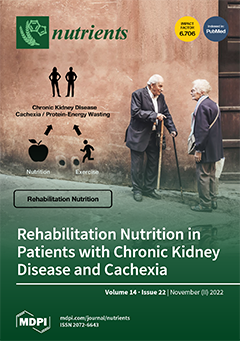The active form of vitamin D
3, i.e., 1,25(OH)
2D
3, exerts an anti-inflammatory effect on the immune system, especially macrophage-mediated innate immunity. In a previous study, we identified 1,25(OH)
2D
3-responsive and vitamin D receptor (VDR)-bound super-enhancer
[...] Read more.
The active form of vitamin D
3, i.e., 1,25(OH)
2D
3, exerts an anti-inflammatory effect on the immune system, especially macrophage-mediated innate immunity. In a previous study, we identified 1,25(OH)
2D
3-responsive and vitamin D receptor (VDR)-bound super-enhancer regions in THP-1 cells. Herein, we examined the transcriptional regulation of
ArfGAP with SH3 Domain, Ankyrin Repeat and PH Domain 2 (
ASAP2) (encoding a GTPase-activating protein) by 1,25(OH)
2D
3 through the top-ranked VDR-bound super-enhancer region in the first intron of
ASAP2 and potential functions of ASAP2 in macrophages. First, we validated the upregulation of
ASAP2 by 1,25(OH)
2D
3 in both THP-1 cells and macrophages. Subsequently, we identified three regulatory regions (i.e., the core, 1,25(OH)
2D
3-responsive, and inhibitory regions) in the VDR bound-enhancer of
ASAP2. ASAP2 promoted RAC1-activity and macrophage efferocytosis in vitro. Next, we assessed the functions of ASAP2 by mass spectrometry and RNA sequencing analyses. ASAP2 upregulated the expressions of antiviral-associated genes and interacted with SAM and HD domain-containing deoxynucleoside triphosphate triphosphohydrolase 1 (SAMHD1). In vivo, vitamin D reduced the number of apoptotic cells in experimental autoimmune encephalomyelitis (EAE) and promoted macrophage efferocytosis in peritonitis without changing the mRNA level of
ASAP2. Thus, we could better understand the regulatory mechanism underlying
ASAP2 transcription and the function of ASAP2, which may serve as a potential treatment target against inflammatory diseases and virus infections.
Full article






